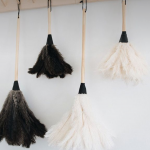How to take care of your indoor plants
In recent years, indoor gardening has surged in popularity as people seek to bring a touch of nature into their homes. Houseplants not only enhance the aesthetics of indoor spaces but also provide numerous health benefits, from purifying the air to reducing stress levels. However, for those new to plant parenting, keeping indoor plants thriving can sometimes be a challenge. Fear not! With the right knowledge and care, you can cultivate a lush indoor jungle that will flourish for years to come.
Tips on Taking Care of your House Plants
1. Understanding Your Plants:
Before diving into care routines, it’s essential to understand the unique needs of your houseplants. Different species have varying requirements for light, water, humidity, and temperature. Take some time to research each plant’s specific preferences, including its ideal environment and any potential pests or diseases to watch out for.
2. Lighting:
Light is one of the most crucial factors in indoor plant care. Most houseplants fall into one of three categories based on their light requirements: low, medium, or high. Place low-light plants, such as snake plants and pothos, in areas with minimal natural light, while high-light plants like succulents and cacti thrive in bright, indirect sunlight. Medium-light plants, such as peace lilies and spider plants, do well in spaces with moderate to bright, indirect light. Rotate your plants periodically to ensure even growth and prevent them from leaning towards the light source.
3. Watering:
Overwatering is a common mistake that can lead to root rot and other issues, so it’s essential to establish a watering routine based on your plants’ needs. Before watering, check the soil moisture by inserting your finger about an inch into the soil. If it feels dry, it’s time to water. Use room temperature water and ensure thorough drainage to prevent waterlogging. During the growing season, typically spring and summer, plants may require more frequent watering, while in the dormant season, watering can be reduced. Always adjust your watering schedule based on environmental conditions such as humidity and temperature.
4. Humidity:
Indoor environments often have lower humidity levels than plants prefer, especially during the winter months when heating systems are running. Increase humidity around your plants by misting them regularly, placing a tray of water filled with pebbles beneath them, or using a humidifier. Grouping plants together can also create a microclimate with higher humidity levels. Certain plants, like ferns and orchids, are particularly sensitive to low humidity and may benefit from these methods.
5. Temperature:
Most indoor houseplants prefer temperatures similar to those humans enjoy—between 60-75°F (15-24°C) during the day and slightly cooler at night. Avoid placing plants near drafty windows, air vents, or radiators, as extreme temperature fluctuations can stress them. Additionally, be mindful of cold drafts during the winter months and excessive heat during the summer, as both can negatively impact plant health.
6. Feeding and Fertilising:
While potting soil provides some nutrients, it’s essential to supplement your plants’ diet with fertilizer during the growing season to promote healthy growth and vibrant foliage. Choose a balanced liquid fertilizer or a slow-release granular formula and dilute it to half strength to avoid over-fertilizing, which can harm your plants. Apply fertilizer according to the manufacturer’s instructions, typically every 2-4 weeks during the growing season, and reduce or suspend fertilization during the dormant season.
7. Pruning and Maintenance:
Regular pruning not only helps maintain the shape and size of your plants but also encourages new growth and removes dead or diseased foliage. Use clean, sharp scissors or pruning shears to trim away yellowing or damaged leaves, as well as any overgrown stems or branches. Inspect your plants regularly for signs of pests such as aphids, mealybugs, or spider mites, and address infestations promptly using natural or chemical remedies.
Caring for indoor houseplants can be a rewarding and fulfilling experience, providing a connection to nature and a sense of tranquility within your home. By understanding your plants’ needs and providing them with proper care, you can create a thriving indoor garden that brings beauty and joy into your life. So roll up your sleeves, grab your watering can, and get ready to watch your green companions flourish!
Do you live in Brisbane and really want a clean home? Before investing your time in cleaning try our house or apartment spring cleaning. Our Spring Cleaners can help out by cleaning, decluttering and organising your home to prep it for a more regular home cleaning service.
If the thought of cleaning is just too much call our Nest Cleaners and we would love to help!
BOOK NOW: Call 0438 079 996 OR Online Estimate with Nest Cleaning in Brisbane, Australia









